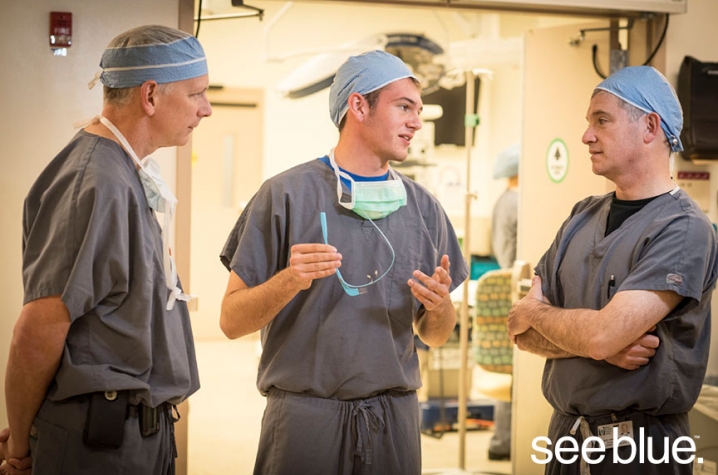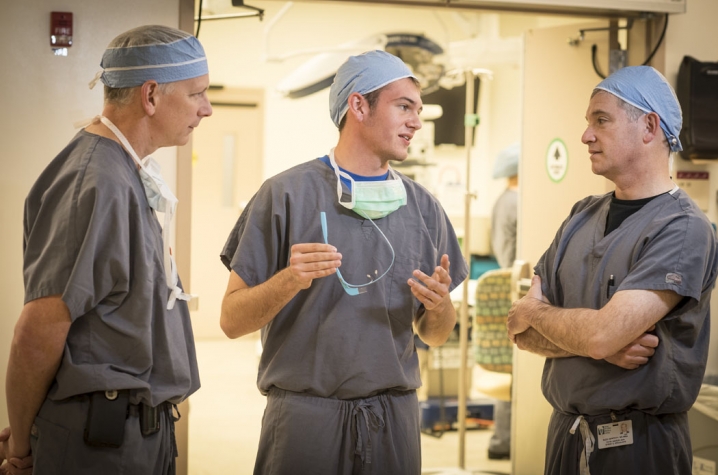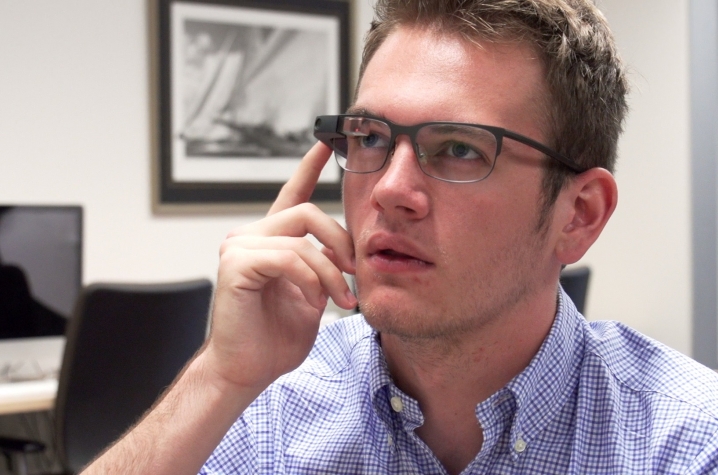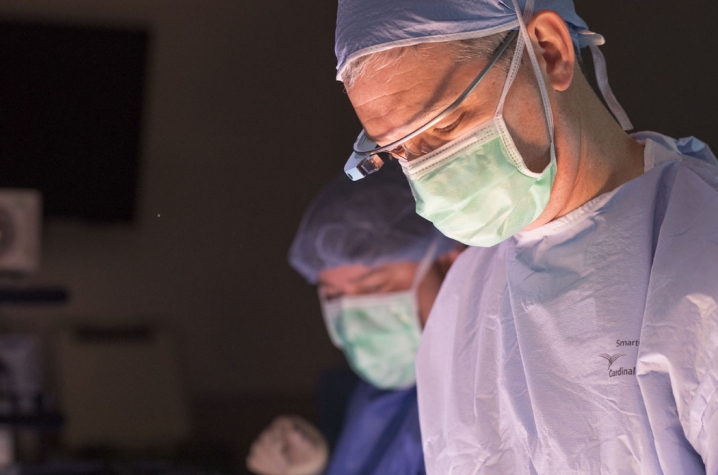A Vital Vision: UK Student Brings Wearable Technology to the OR
Video by UK REVEAL Research Media. To view captions for this video, push play and click on the CC icon in the bottom right hand corner of the screen.
LEXINGTON, Ky. (June 3, 2016) — Surgeons and anesthesiologists prepped for their next bariatrics surgery: scrubs, masks, gowns, gloves? Check. And then the software engineer geared up: Google Glass, connected and fully charged? Check. They headed into the operating room.
The software engineer was University of Kentucky computer science student Zack Anderson, who watched the surgery from the corner as Dr. Alex Gandsas and an anesthesiologist wore Google Glass technology mounted on their eyeglasses. In the top right corner of the right lenses, they saw the patient's vital signs. Anderson watched as his work was put to the ultimate test, and it passed.
"It's one thing to just build an application and just put it to the side," Anderson said. "But it's another thing to actually go into the place that you've designed it for and see people using it. The look on people's faces when they use this application, I mean, it was just incredible."
The goal was to reduce the distraction surgeons and anesthesiologists must often face as they deal with many aspects of an operation. Applying wearable technology to glasses allows them to keep their eyes on the patient and monitor vitals at the same time.
"We found out that the anesthesiologist can get distracted easily," Anderson said. "He has a lot of things that he has to do."
So Anderson, working with Dr. Gandsas of the Anne Arundel Medical Center (AAMC) in Maryland, built the programs needed to connect a computer to an anesthesia machine and Google Glass technology to the computer. And eventually, they thought, why not have both the anesthesiologists and the surgeons wearing the technology?
In May, after a series of tests, the team deployed their technology for surgery for the first time.
"He's (the user) not looking across the room to try and, you know, figure out what these vital signs are," Anderson said. "He can just focus on the patient and be able to get those vital signs in real time."
Here's how it works: a computer is hooked up to a particular type of anesthesia machine from GE Healthcare to receive the data. Anderson wrote code that essentially pulls specific vital signs — heart rate, blood pressure and blood oxidation level, all crucial to a patient's health — about every second. The Google Glass technology is connected to the computer and once the computer has the data, Anderson broadcasts it to the Google Glass lenses.
"I think that wearable computer technology has a place in today’s operating room to close the communication gap between team members while providing an extra layer of safety for our patients," said Dr. Gandsas, who is a bariatric surgeon and director of the AAMC Weight Loss and Metabolic Program.
Anderson pointed out that although the future of Google Glass is uncertain, wearable technologies are sure to revolutionize health care. Whether it's Google Glass, Oculus Rift or Microsoft's HoloLens; "it could be anything."
Believe it or not, Anderson had never really worked with wearable technologies before. The venture began as an undergraduate research project his freshman year, working with UK Department of Computer Science Chair and Professor Brent Seales. When Dr. Gandsas contacted Seales about the idea for wearable technology in the operating room, Seales called on Anderson.
"I really love creating new ideas and coming up with new things," Anderson said. " I got in contact with Dr. Seales and he gave me the ability to do those kinds of projects."
And while Anderson describes this project as incredible, it hasn't been a cakewalk. His greatest lesson learned from Seales is how to solve a tough problem: you must work on it from multiple angles. In fact, Anderson had to address his entire project from an unfamiliar angle.
"Usually, when you think about computer science, you just think about coding," he said.
You don't think about a surgeon in the operating room.
"But to be able to say that I was able to build an application to where it could potentially save someone's life because they're able to see the vital signs all the time, any time … it was really cool," Anderson said.
For the 20-year-old computer whiz, he had to understand not only is he writing code, but he's working to solve a real, and significant, problem for people.
"And you don't exactly know what problems there are in the world until you actually go there and talk to the people who are experiencing them," he said.
Anderson believes undergraduate research gave him the opportunity not only to network with experts at UK and doctors across the U.S., but the ability to think about how computer science can make a difference.
"Because, you know, I feel like we all have a purpose here, we all want to help people and make our lives easier and better."
UK is the University for Kentucky. At UK, we are educating more students, treating more patients with complex illnesses and conducting more research and service than at any time in our 150-year history. To read more about the UK story and how you can support continued investment in your university and the Commonwealth, visit uky.edu/uk4ky. #uk4ky #seeblue
MEDIA CONTACT: Whitney Harder, 859-323-2396, whitney.harder@uky.edu








